About
Oysters effectively filter the water column, resulting in improved water quality, and provide essential fish habitat for valuable fish species, including gag grouper, gray snapper, sheepshead, redfish, and spotted sea trout.
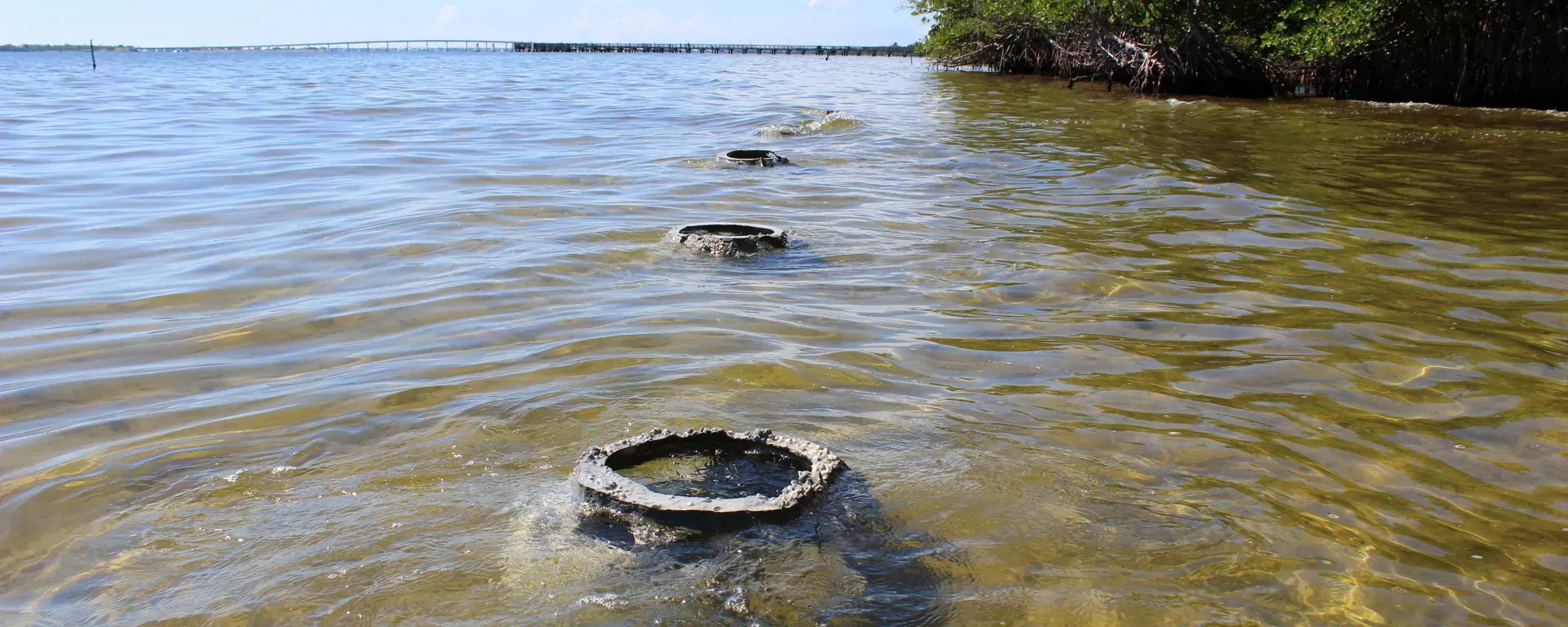
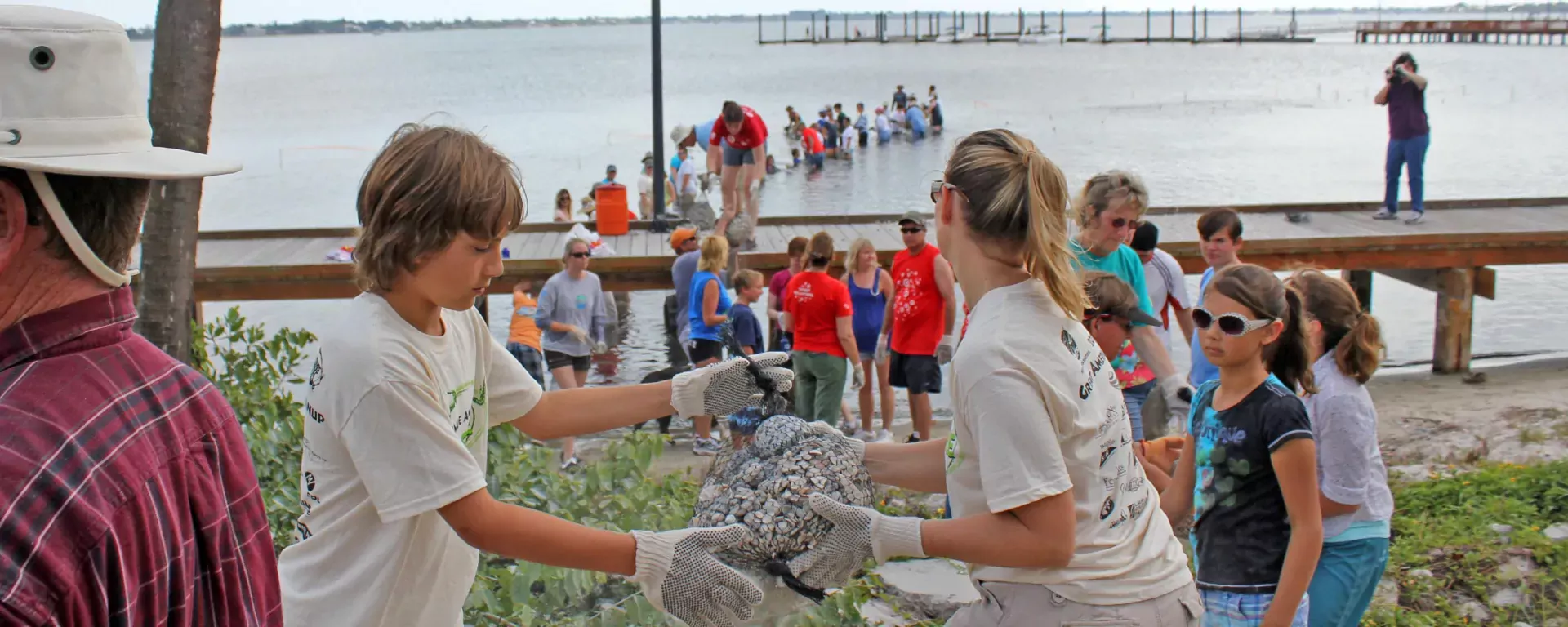
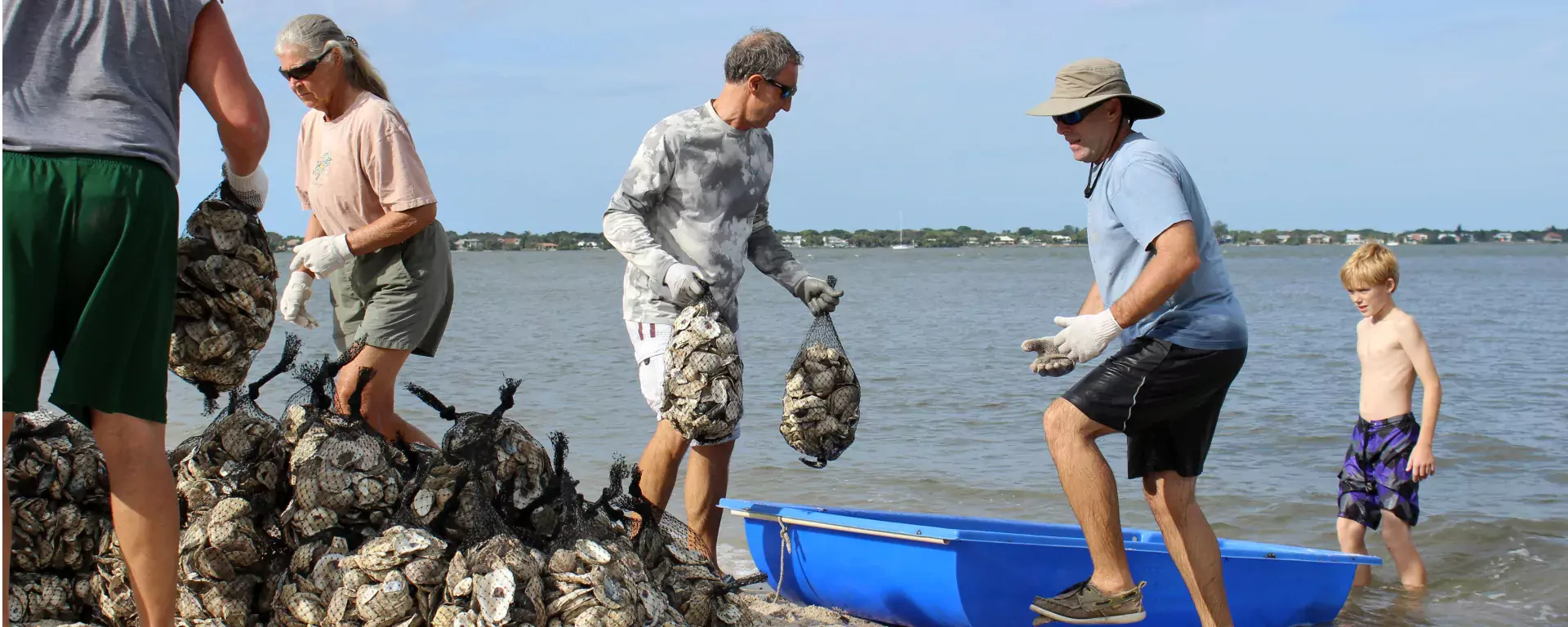
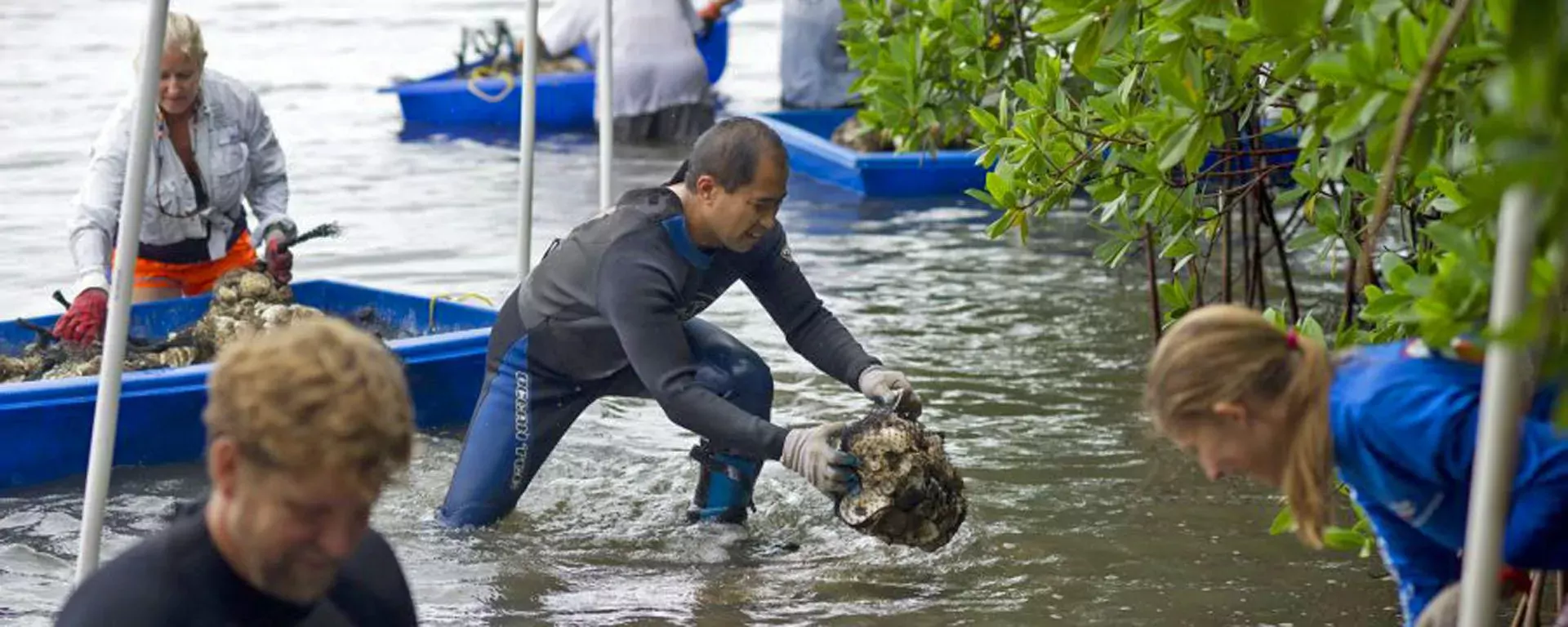
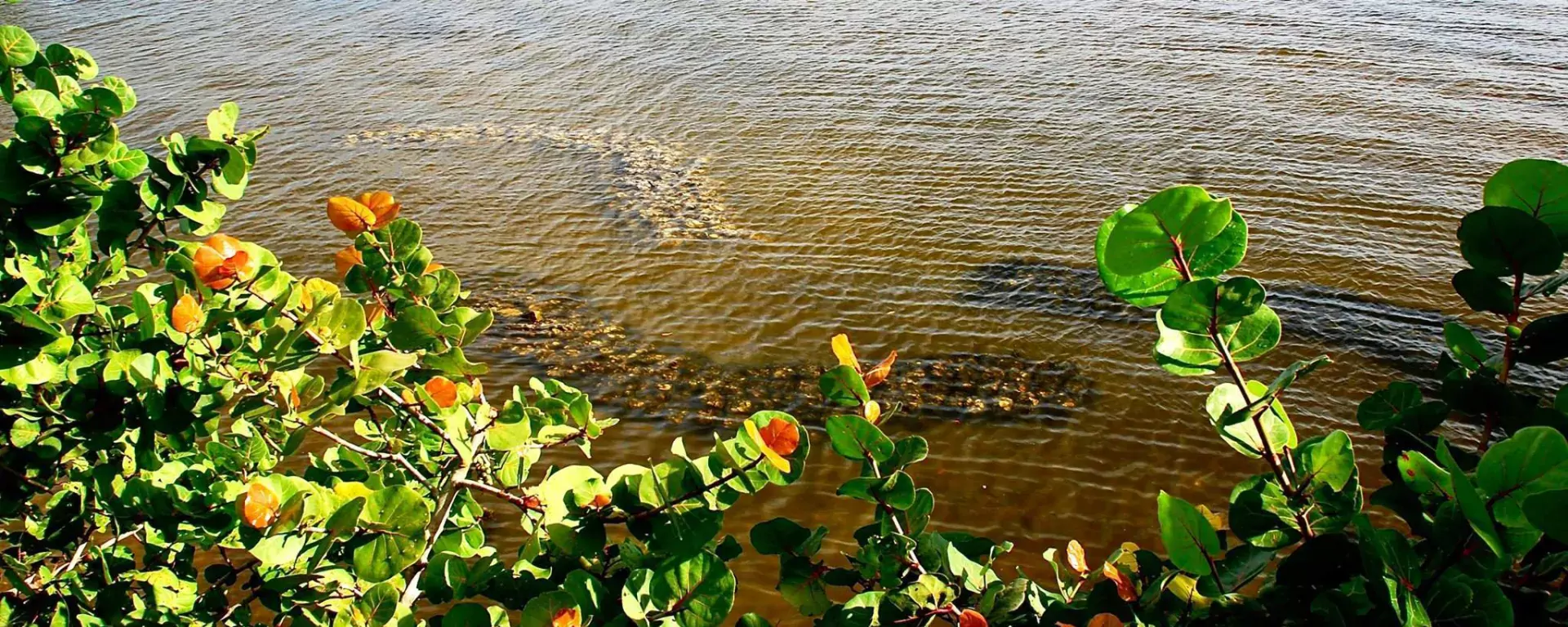
Oysters effectively filter the water column, resulting in improved water quality, and provide essential fish habitat for valuable fish species, including gag grouper, gray snapper, sheepshead, redfish, and spotted sea trout.
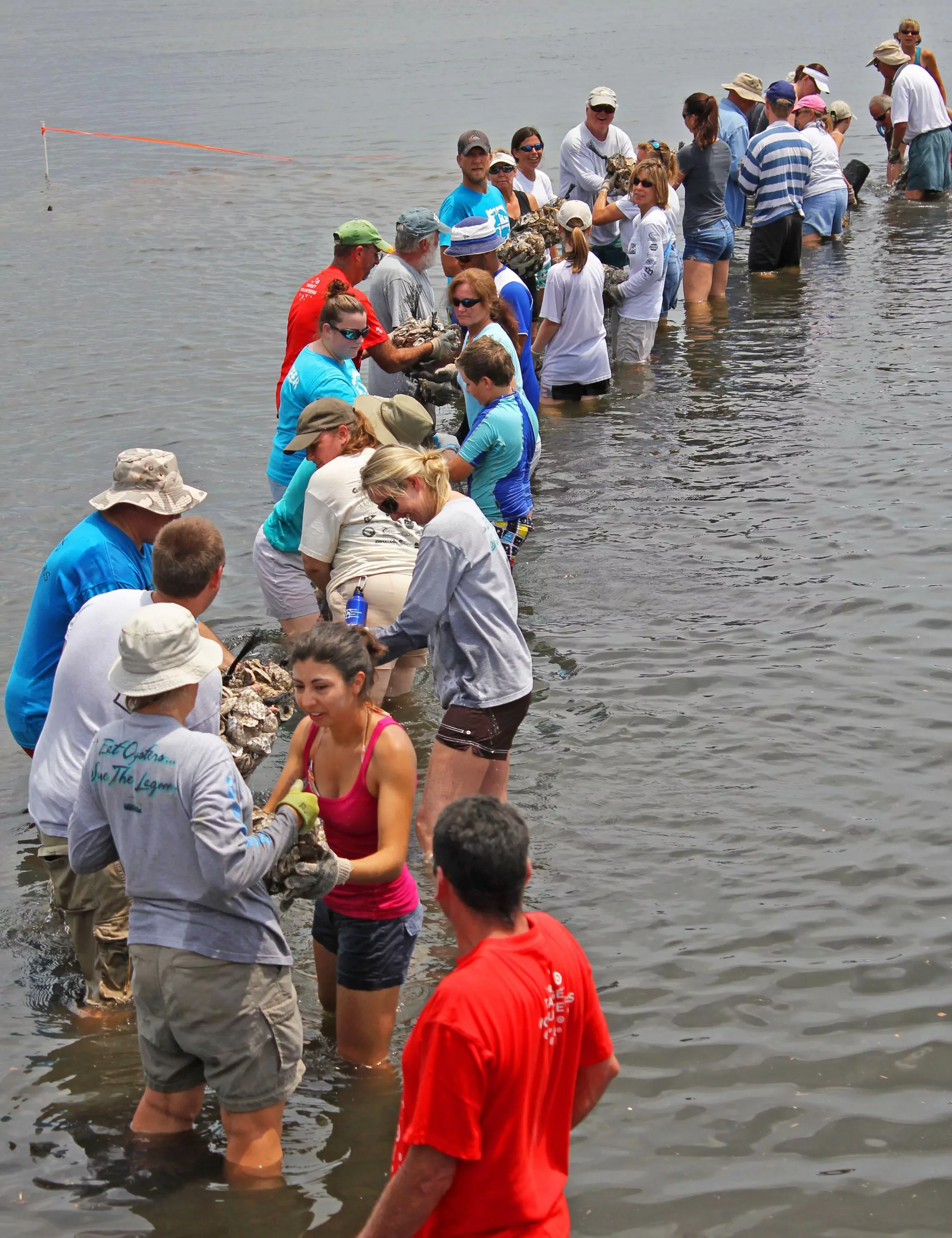
The St. Lucie Estuary (SLE), IRL and adjacent terrestrial ecosystems provide habitat for over 4,300 species of plants and animals, including more than 30 threatened and endangered species (manatee, wood stork, sandhill crane, and peregrine falcon).
Vegetated, intertidal oyster reefs increase coastal resiliency by protecting nearby shorelines, dispersing wave energy and retaining onshore sediment.
The removal of exotic vegetation and planting of native trees and shrubs will improve the available habitat for wildlife.
In cases of sensitive shoreline areas, oyster reefs may provide protection from erosion and protect nearshore, shoreline, and upland areas (Henderson and O’Neil, 2003).
Oyster reefs can be combined with shoreline planting to protect against shoreline erosion by dissipating the energy caused by boat wakes and waves and stabilizing the substrate.
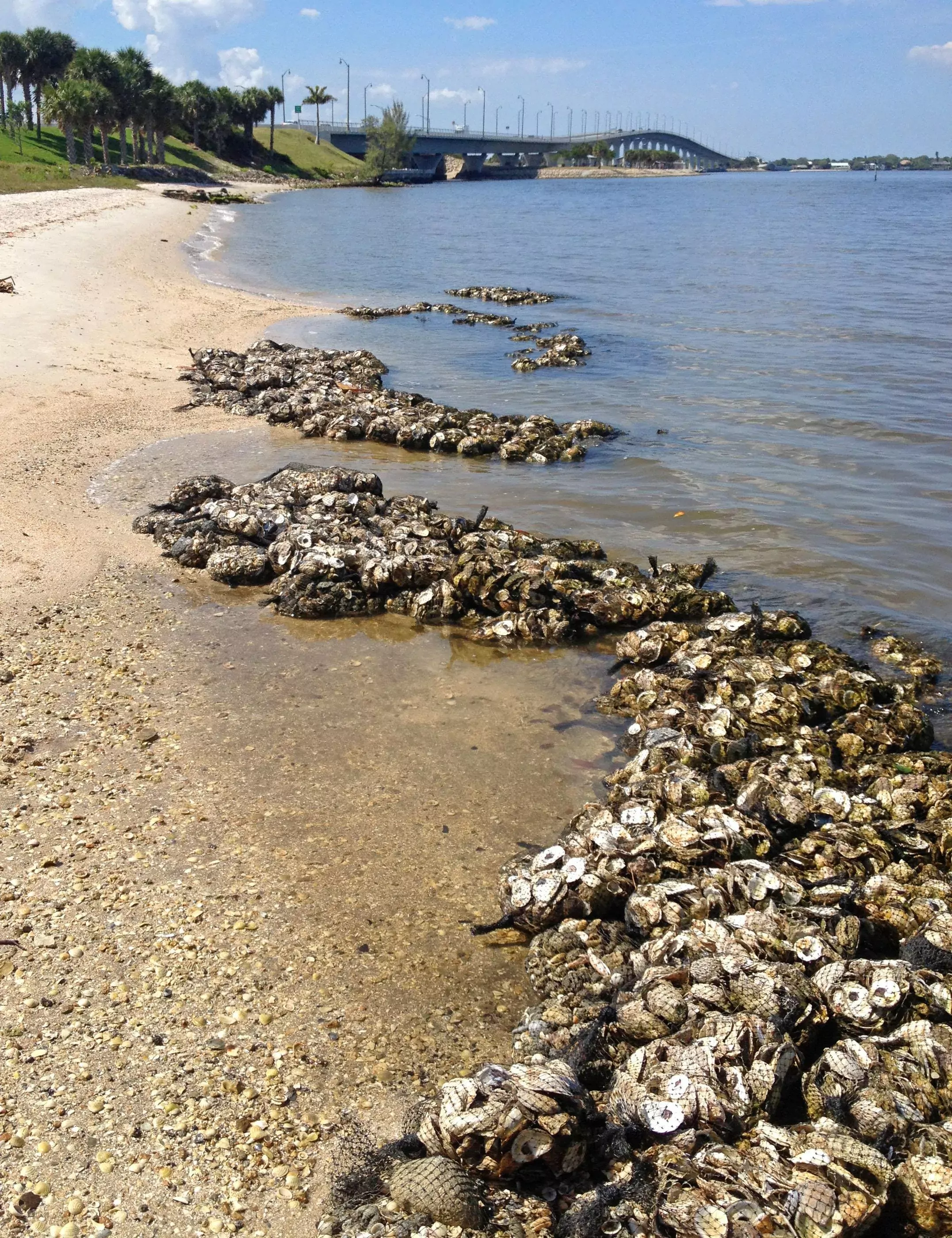
The physical presence of an oyster reef is a stabilizing force for unconsolidated bottom sediments.
The resulting deflection of waves and dissipation of wave energy protects shorelines from erosive forces, encouraging the settlement of suspended sediments and promoting establishment of submerged aquatic vegetation (SAV).
This, in turn makes the intertidal and immediately upland area suitable for establishment of a living shoreline.
Along the eastern shore of the IRL, restoration of a living shoreline is proposed, similar in composition to that which fringed the IRL prior to residential development.
Mangroves, cordgrass, and other appropriate plant species will be planted to stabilize the shoreline. Bagged oyster shell and Reef Balls will stabilize and protect these plantings.
Pour la commodité des utilisateurs, ce site Web du comté de Martin utilise le service de traduction gratuit de Google. En cliquant sur le bouton "J'accepte", vous acceptez que les pages de ce site Web soient converties dans des langues autres que l'anglais. Le comté de Martin s'est efforcé d'assurer l'exactitude de la traduction. Cependant, aucune traduction automatique ou informatique n'est parfaite. Par exemple, la traduction n'est pas sensible au contexte et ne peut pas entièrement traduire le texte dans son sens complet. En outre, vous pouvez trouver des différences associées aux dialectes ou aux préférences régionales. De plus, vous ne pouvez pas traduire des graphiques avec du texte, des fichiers PDF ou des applications spéciales sur ce site Web. Le comté de Martin n'est pas responsable de la traduction fournie par Google. La version originale de ce site Web est disponible en anglais. En cas de divergence entre la version anglaise de ce site Web et la version traduite, la version anglaise prévaudra. En cliquant sur "J'accepte", vous acceptez que toute divergence dans la traduction ne soit pas contraignante et n'ait aucun effet juridique. Martin County ne peut garantir l'exactitude du texte converti et n'assume aucune responsabilité pouvant découler de l'utilisation ou de l'utilisation de la traduction fournie par Google. En cliquant sur "J'accepte", vous acceptez de renoncer à toute perte pouvant être causée au comté de Martin en vous fiant à la traduction fournie par Google.
Para comodidad de los usuarios, este sitio web del condado de Martin utiliza el servicio gratuito de traducción de idiomas de Google. Al hacer clic en el botón "Acepto", acepta que las páginas de este sitio web se conviertan a otros idiomas además del inglés. El condado de Martin ha hecho todo lo posible para garantizar la precisión de la traducción. Sin embargo, ninguna traducción automática o por computadora es perfecta. Por ejemplo, la traducción no es sensible al contexto y no puede traducir completamente el texto a su significado completo. Además, puede encontrar diferencias asociadas con dialectos o preferencias regionales. Además, no puede traducir gráficos con texto, archivos PDF o aplicaciones especiales en este sitio web. El condado de Martin no es responsable de la traducción proporcionada por Google. La versión original de este sitio web está disponible en inglés. Si hay alguna discrepancia entre la versión en inglés de este sitio web y la versión traducida, la versión en inglés prevalecerá. Al hacer clic en "Acepto", acepta que cualquier discrepancia en la traducción no será vinculante y no tendrá ningún efecto legal. El condado de Martin no puede garantizar la precisión del texto convertido y no asume ninguna responsabilidad que pueda derivarse del uso o la confianza en la traducción proporcionada por Google. Al hacer clic en "Acepto", acepta renunciar a cualquier pérdida que pueda causarse al condado de Martin al confiar en la traducción proporcionada por Google.
Pou konvenyans itilizatè yo, sitwèb Martin County sa a itilize sèvis tradiksyon lang gratis Google la. Lè w klike sou bouton "Mwen Aksepte", ou dakò ke paj yo nan sit entènèt sa a pral konvèti nan lang ki pa angle. Martin County te fè tout efò posiblite pou asire tradiksyon an presizyon. Sepandan, pa gen okenn tradiksyon machin oswa òdinatè ki pafè. Pa egzanp, tradiksyon an pa sansib nan kontèks epi li pa ka tradui tèks la nèt ak tout siyifikasyon li. Epitou, ou ka jwenn diferans ki asosye ak dyalèk oswa preferans rejyonal yo. Epitou, ou pa ka tradui grafik ak tèks, dosye PDF oswa aplikasyon espesyal sou sit entènèt sa a. Martin County pa responsab pou tradiksyon Google bay la. Vèsyon orijinal sitwèb sa a disponib nan lang angle. Si gen nenpòt diferans ant vèsyon angle a nan sit entènèt sa a ak vèsyon an tradui, vèsyon angle a pral pran priyorite. Lè w klike sou "Mwen dakò", ou dakò ke nenpòt dezakò nan tradiksyon an pa pral obligatwa epi yo pa pral gen okenn efè legal. Martin County pa ka garanti presizyon tèks konvèti a epi li pa sipoze okenn responsablite ki ka rive lè w sèvi ak oswa konte sou tradiksyon Google bay la. Lè w klike sou "Mwen dakò" ou dakò pou renonse nenpòt pèt ki ka lakòz Martin County lè w konte sou tradiksyon Google bay la.
為方便用戶,本馬丁縣網站使用谷歌的免費語言翻譯服務。單擊“我接受”按鈕,即表示您同意將本網站的頁面轉換為英語以外的語言。馬丁縣已盡一切努力確保翻譯的準確性。然而,沒有機器或計算機翻譯是完美的。例如,翻譯對上下文不敏感,無法將文本完全翻譯成其完整含義。此外,您可能會發現與方言或地區偏好相關的差異。此外,您不能翻譯帶有文本的圖形、PDF 文件或本網站上的特殊應用程序。馬丁縣不對 Google 提供的翻譯負責。本網站的原始版本是英文的。如果本網站的英文版本與翻譯版本之間存在任何差異,以英文版本為準。單擊“我同意”即表示您同意翻譯中的任何差異均不具有約束力,也不具有任何法律效力。 Martin County 無法保證轉換後文本的準確性,並且不承擔因使用或依賴 Google 提供的翻譯而產生的任何責任。點擊“我同意”即表示您同意放棄因依賴谷歌提供的翻譯而給馬丁縣造成的任何損失。